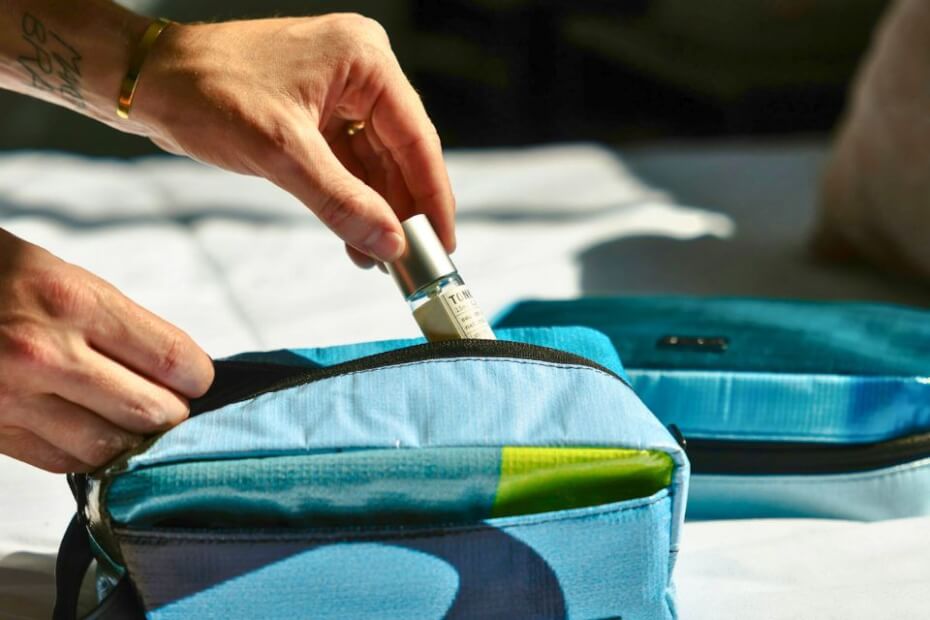
Six major airports in the United Kingdom (UK) have reinstated the 100-milliliter (mL) liquid restriction for carry-ons.
This was the case despite the recent security upgrades that should have eliminated the rule, as per TTG Media.
The change took effect on 9 June and will affect passengers traveling from London City, Aberdeen, Newcastle, Leeds Bradford, Southend, and Teesside airports.
All six airports operate with Next Generation Security Checkpoints (NGSC), which allowed them to scrap the 100-mL rule.
The high-tech CT scanners utilize X-ray technology to generate a 3D image of the contents of passengers’ bags.
The advanced scanners allow travelers to keep their laptops and other electronic devices in their bags during security checks.
“We’ve reintroduced that rule while updates and changes are made to the scanning equipment at airports,” UK Transport Secretary Mark Harper said to The Guardian.
He added that this is “to make sure we can continue delivering our world-leading levels of aviation security.”
The decision to reinstate the 100-mL restriction is due to increased security concerns following intelligence reports of potential threats to European air travel.
However, the Department of Transport (DfT) highlighted that it was “a routine measure” and was not a response “to a specific threat.”
It added that it is temporary but necessary “to enable further improvements to be made to the new checkpoint systems.”
The 100-mL liquid restriction
The 100-mL liquid rule was first introduced in 2006 following a foiled terrorist plot to detonate liquid explosives on board transatlantic flights.
It mandated that all liquids carried onto planes must be in containers no more than 100 mL and placed in a clear, resealable plastic bag.
The rule was designed to enhance security by making it easier for screening technology to detect potential threats.
Since then, airports have invested heavily in advanced screening technology, like other airports worldwide.
The upgrades include state-of-the-art high-technology scanners distinguishing dangerous liquids and harmless substances.
These new NGSC 3D scanners make the 100-mL limit unnecessary and obsolete.
Thanks to these technological advancements, the UK government has set a deadline to remove the restriction in June 2024.
However, many UK airports, such as Heathrow, London Gatwick, and Manchester, said they would not be fully ready by then.
This deadline has since been moved to 2025 because many UK airports have encountered issues procuring and installing new scanners.
Reinstated 100-mL rule’s impact on travelers
DfT said the 100-mL liquid restriction will “only affect a small number of passengers.”
“For most passengers, security measures will remain unchanged,” it said in a statement.
It added, “Passengers should continue to check security requirements with their departure airport before traveling.”
The sudden reinstatement of the restriction has led to confusion and frustration.
Passengers must once again adjust their packing habits and potentially dispose of valuable liquids at security.
This follows concerns about lengthy delays and inconsistent security procedures across different airports.
Transport Secretary Mark Harper said travelers should “check with their airport what the rules are” for liquids in their hand luggage.
The Association of British Travel Agents (ABTA) had advised travelers to stick to the 100-mL liquid restriction for carry-ons.
This was initially due to the “lack of consistency across UK airports,” with some airports having the new scanners and others yet to install them.
Luke Petherbridge, ABTA’s Director of Public Affairs, said that by doing so, travelers would “be ready to comply, whatever the scenario.”
Sticking to the 100-mL rule will significantly help avoid unnecessary delays through security and other difficulties during their holidays.
Airline industry reaction to reinstating the 100-mL rule
The decision to reinstate the 100-mL liquid restriction rule on carry-ons has also drawn criticism from the travel industry.
Airlines, airport operators, and travel agencies have expressed concerns about the impact on passenger experience and operational efficiency.
The reintroduction of the restriction is expected to cause delays at security checkpoints and put additional pressure on airport staff.
Still, the 100-mL liquid restriction in carry-ons is expected to remain in place until further notice.
Travelers must pack liquids in 100-mL containers in a clear, resealable bag for carry-on luggage.
Airports and airlines also provide additional information and assistance to help passengers navigate the renewed restrictions.
More airport security checks that may cause delays
Travelers also need to be more aware of the upcoming new border check systems the European Union (EU) will impose soon.
Beginning October 2024, the Entry/Exit System (EES) will replace manual passport stamping at the EU’s external borders.
The EES will use non-EU citizens’ biometric data, such as facial and fingerprint scans, to record their entry and exit to and from the Schengen Zone.
The EU will launch the European Travel Information and Authorization System (ETIAS) for all non-visa nationals, such as British citizens, by mid-2025.
It will work similarly to the UK’s Electronic Travel Authorization (ETA) and the Electronic System for Travel Authorization of the United States.

